Fragment Screening at Diamond Light Source

Helen Gingell and Tina Howard went on a four-day trip to the Diamond Light Source at Harwell in Oxfordshire.
Peak Proteins usually access the x-ray beamlines remotely to collect diffraction data which is later processed to determine the crystal structure of proteins.
Fragment Screening
This experiment was a little different. Our client wanted to us to carry out a fragment screen using Diamonds’ XChem facility. Over 800 low molecular weight compounds were used from both the clients own, and Diamonds’ fragment library.
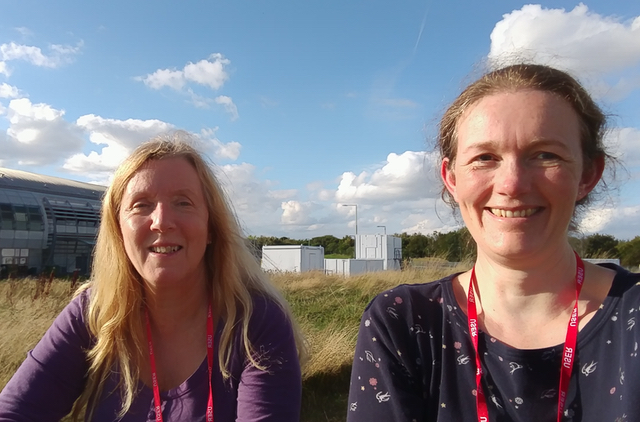
Tina Howard and Helen Gingell outside the Diamond Synchrotron
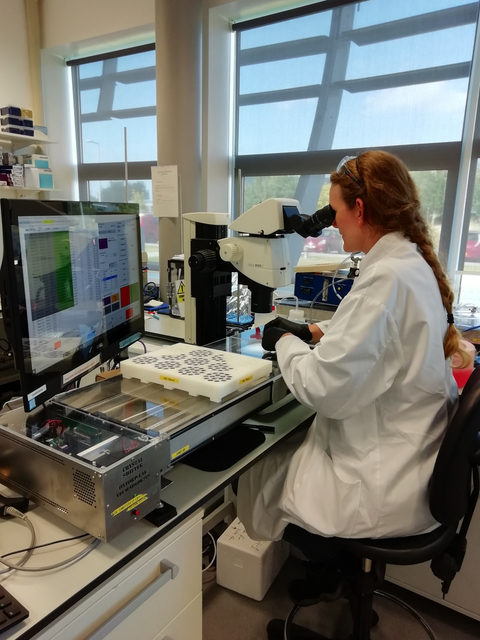
Helen Gingell selecting crystals at the Diamond Facility
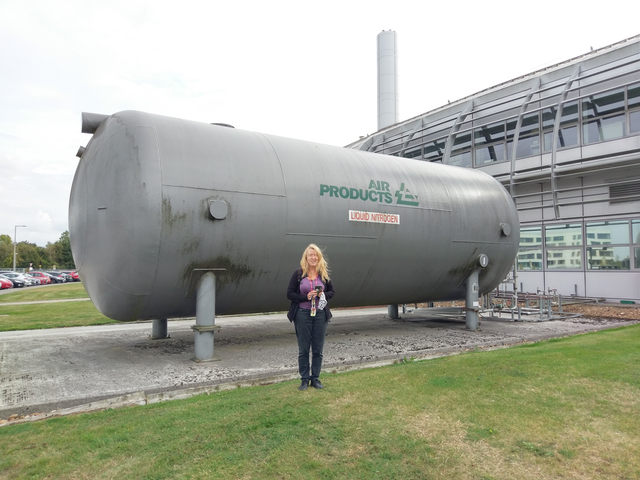
Tina Howard and the Giant Liquid Nitrogen Tank
The team at Peak Proteins produced over 2000 good quality crystals of one single protein to ensure each of the fragments could be introduced to high quality crystals of the protein. An Echo Dispenser was used to acoustically bounce a specified volume of highly concentrated solution of the fragment into the drops containing the crystal. The Echo precisely directs the compound to a position the user has pre-selected within the drop ensuring the crystal isn’t hit directly and damaged by the relative force of the addition.
Tina Howard selects crystals for final analysis
The crystals are soaked for several hours to give time for the compound to diffuse through the solvent channels of the crystal and potentially bind to any suitable sites within the protein. Soaked crystals are then harvested using a nylon loop mounted on a magnetic base and rapidly transferred to metal pucks which are stored under liquid nitrogen for testing. The crystal harvesting is carried out using a CrystalShifter. The crystals are cooled to cryogenic temperatures to reduce the amount of radiation damage which results from exposure to x-rays while data is collected.
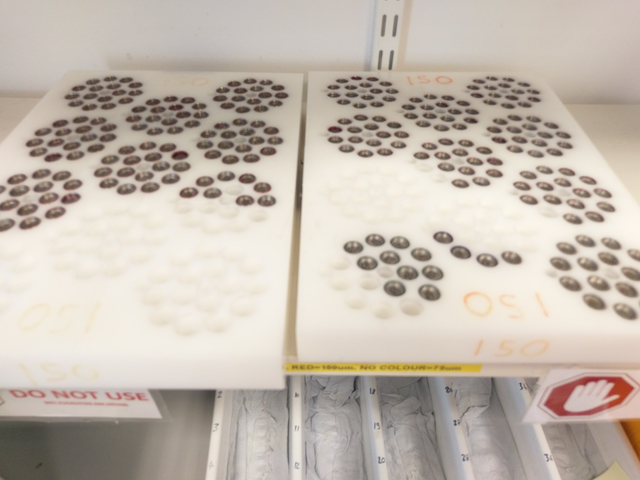
Nylon sample loops for harvesting crystals
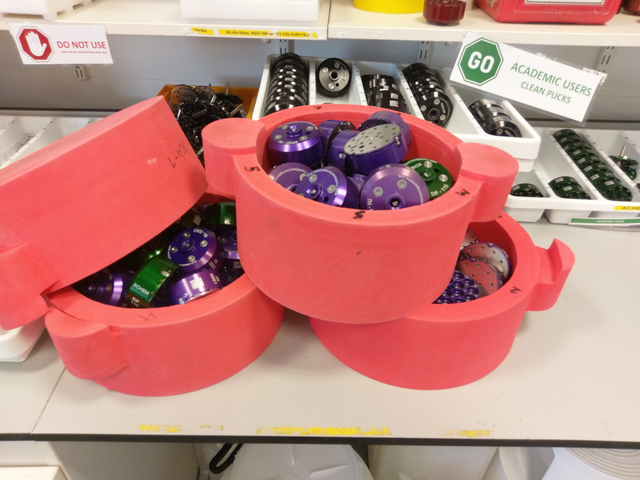
Metal pucks for storing crystals under liquid nitrogen
The actual data collection is carried out robotically with a rapid transfer of the crystal from liquid nitrogen immersed pucks into the Xray beam (where a cryostream keeps them frozen). Here, for this particular crystal system, the crystals are rotated 180° in the beamline. An image is collected every 0.05° of rotation adding up to several thousands of images per crystal. Multiply that by almost a thousand samples is a lot of data! The practical elements of the projects completed, but the analysis of the data will be ongoing for a long while afterwards.
Robotic rapid transfer of crystal from liquid nitrogen to x-ray beam
Helen commented, “We’d like to thank the XChem fragment team for their help, especially Alex,” adding, “It was great to go down to see the Diamond Light Source and be part of the experiment. The whole X-Chem soaking, harvesting and data collection system is on such a grand scale. It was also great to see the environmentally friendly initiatives on site, too”.
Diamond Light Source
Diamond Light Source is the UK’s national synchrotron. It works like a giant microscope, harnessing the power of electrons to produce bright light that scientists can use to study anything from fossils to jet engines to viruses and vaccines.
Diamond Light Source is a not-for-profit limited company funded as a joint venture between UK Research & Innovation (UKRI) and Wellcome Trust.
Diamond provides national science infrastructure that is free at the point of use. Primary facilities are the national Synchrotron along with Cryo electron microscopy at the Harwell Campus, all available to researchers through a competitive application process, provided that published results are in the public domain. Also Industry users can purchase beamtime and services for private research.
Over 14,000 researchers from across life and physical sciences both from academia and industry use Diamond to conduct experiments, assisted by approximately 700 staff.
Fragment sreening: XChem at Diamond
Macromolecular crystallography
These are the fields of science which use Diamond; from macromolecular crystallography (us!), to spectroscopy. All the different beamlines from B07 to XFEL Hub:


